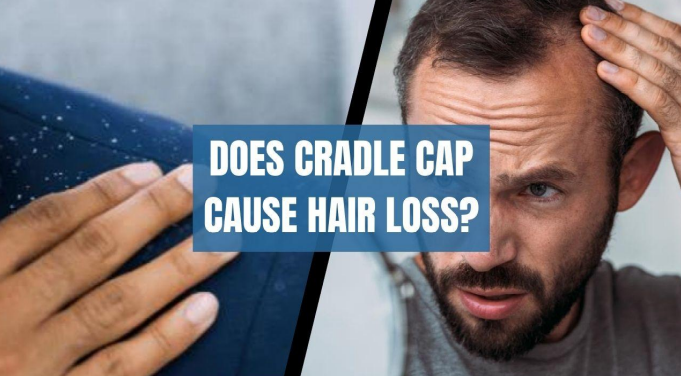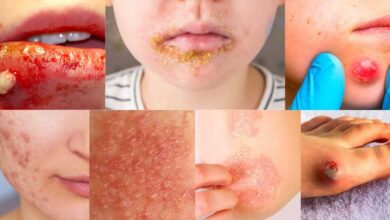Does Cradle Cap In Adults Causes Hair Loss?

We deal with a lot of diseases and skin conditions that mostly affect us in our childhood but may develop again in adulthood. One of them is cradle cap.
When it shows symptoms in adults, we used to call it by the same name. However, there is another more authentic term to describe this skin condition in adults; seborrheic dermatitis.
There are many myths and misconceptions that revolve around it. One of them is the effect on hair loss. So, most people dealing with this condition wonder does it causes hair loss.
To learn about this and get the right treatment, read this article.
Adult cradle cap
Cradle cap in adults usually shows symptoms similar to those that appear in infants and toddlers. It mostly appears on the scalp, face, and chest. However, there is a huge chance of the spread of symptoms to other parts. In adults, the condition is less common. Still, there are more treatment options available to them.
It is better to get proper treatment when you see its symptoms. In children, it can be ignored and usually fades out on its own. However, adults should not ignore it.
The symptoms usually include:
- Redness
- Formation of yellow or white flakes
- Itching
- Scales or patches on the skin
- Excessive oil or dry skin
- Mild inflammation
These symptoms appear when cradle cap is in the moderate form.
There is no exact cause. No one can tell you what leads to cradle cap on your skin. However, doctors blame the yeast “Malassezia” to be responsible for its symptoms. The yeast overactives the sebaceous glands that are responsible for the production of “Sebum” oil. The high amount of this oil causes greasiness and the formation of flakes on the skin.
Read also: CHOOSING THE RIGHT ONE FOR YOUR SKIN TYPE AND CONCERNS
The buildup of dust particles can also cause the formation of visible flakes. However, this will not show other symptoms that seborrheic dermatitis shows.
Does cradle cap in adults cause hair loss?
Now, let’s talk about one of the most serious concerns about this condition. Cradle cap sometimes cause itching. The itching naturally increases the urge to scratch the skin. So, when this happens, and a person scratches frequently, there will be a point when the skin starts losing some hair. This is what confuses people and makes them think that cradle cap in adults causes hair loss. So, the reality is that cradle cap do not cause hair loss. It indirectly can lead to this scenario. However, that loss will be temporary, and the growth should continue after the treatment of seborrheic dermatitis.
If the condition is severe, an unhealthy scalp environment can disrupt the normal and healthy growth process of hair follicles and cause hair loss. If a person tries to pick flakes, some of the hair will also be removed. I hope this has cleared up your confusion. Now, let’s take a look at how to treat this condition.
How to treat it?
There are some easy ways to treat this condition. Take the necessary steps, avoid its triggers, follow best practices, and you are done with it.
- First, take enough baths. This condition often causes excessive oil build-up. So, take daily baths to reduce the amount of oil. This is necessary to keep the skin clean and to lose flakes.
- Second, use a medicated shampoo during the bath. It should be used at least two times a week. If needed, you can increase its use.
- Third, allergens and factors that can cause flare-ups should be avoided.
If available, use a soft brush gently to remove flakes. If unavailable, you are still good to go with this 3-step treatment.
Conclusions
Cradle cap in adults and children may indirectly contribute to hair loss. However, an individual should not worry about it too much. If you see bald spots or the hair loss persists even after the treatment, consult a doctor for personalized treatment. It could be possible that you are dealing with another issue that is leading to hair loss. However, in mild scenarios, you can follow the treatment described in this article.




